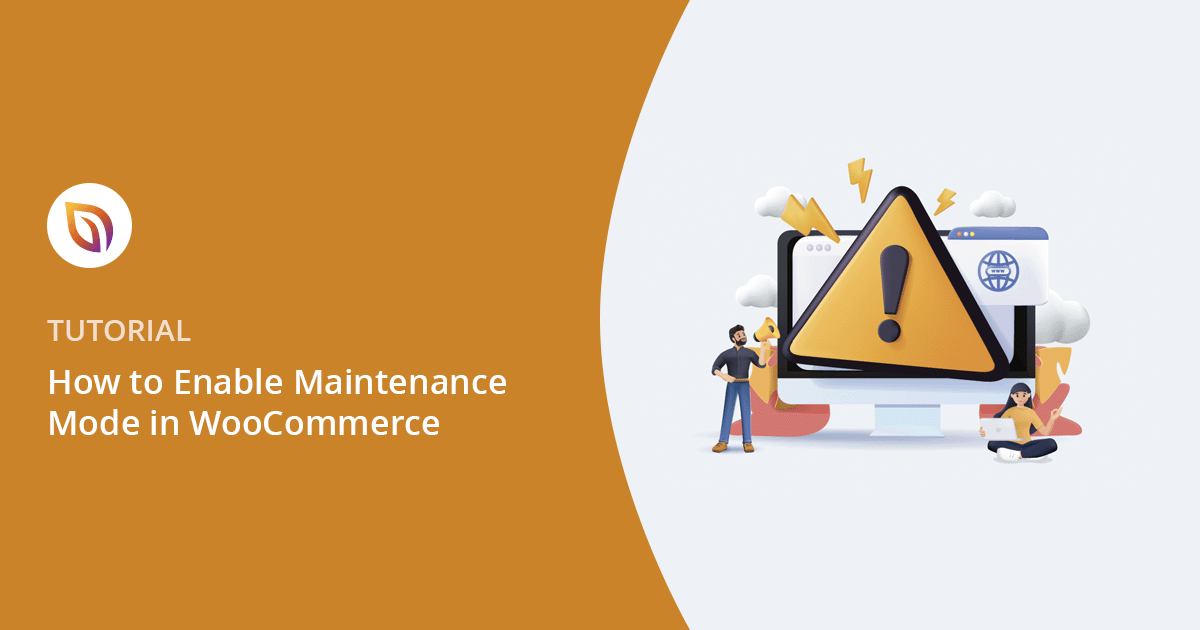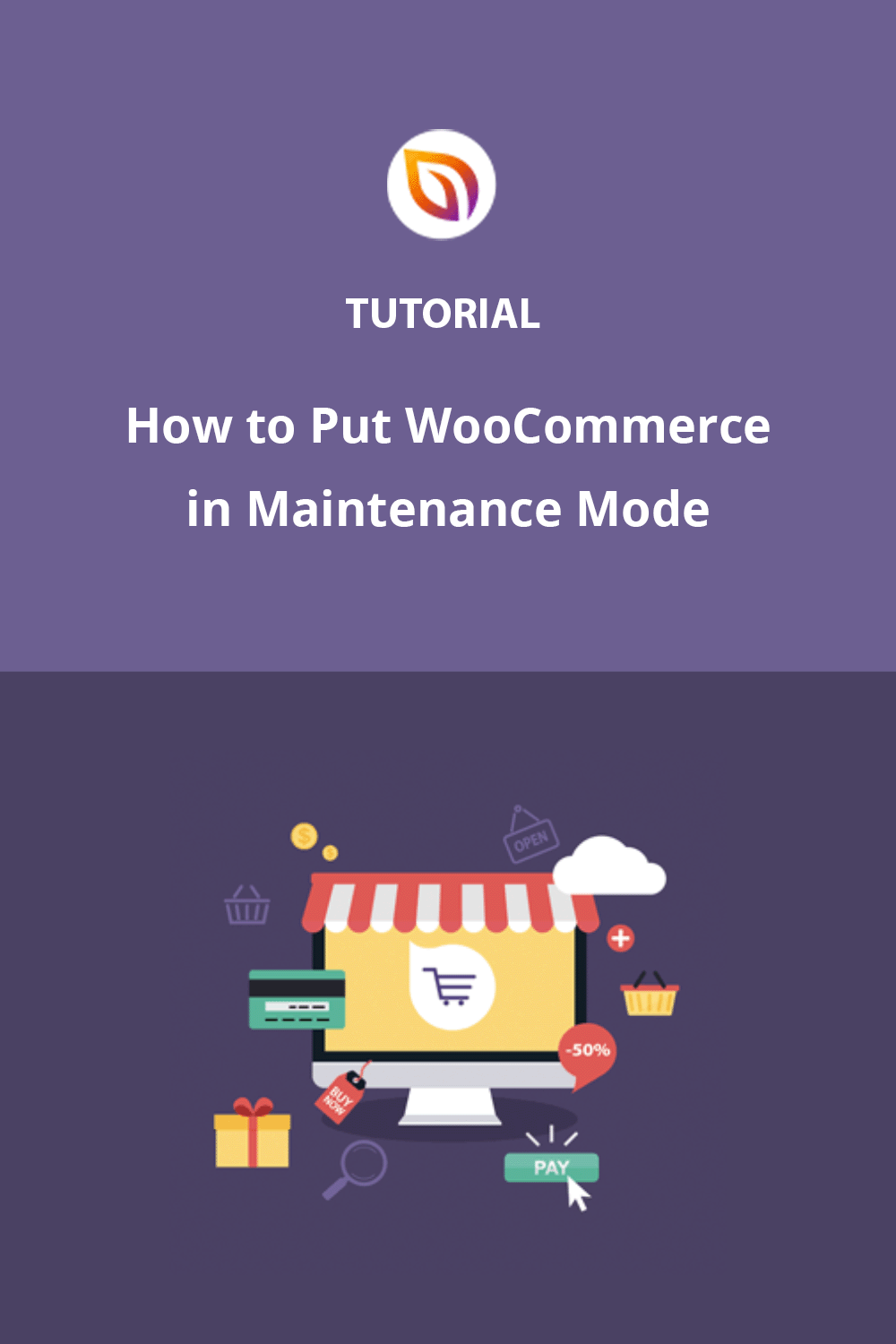Running an online store can be stressful, especially during updates or when you need to make changes to your site. I learned this when I lost customers during a crucial website update because I didn’t put my WooCommerce site in maintenance mode.
Every store owner faces moments when they need to temporarily close their online shop. Maybe you’re updating your product catalog, fixing a bug, or redesigning your store layout. Without proper maintenance mode settings, customers might see broken pages or errors while trying to make purchases.
In this step-by-step guide, I’ll show you how to put your WooCommerce store in maintenance mode properly. I’ll explain the process I use for my own stores, which keeps customers informed while protecting your site during updates. Best of all, you won’t need any coding knowledge to do it.
The Easiest Way to Put WooCommerce in Maintenance Mode:
Why Your Store Needs Maintenance Mode
Imagine your physical store is closed for renovations, but customers keep trying to peek in. Confusing, right?
It’s the same for your online store without WooCommerce maintenance mode. This feature is like a temporary “closed” sign, allowing you to work on your site behind the scenes.
When to Enable WooCommerce Maintenance Mode:
- Website Updates: Put WordPress into maintenance mode to prevent conflicts and make the process seamless.
- Design Changes: Redesigning your store? Test new layouts and features without impacting your customers’ browsing experience.
- Product Management: Adding products, setting up shipping, or configuring payments? Put WordPress in maintenance mode to ensure these changes won’t confuse your shoppers.
- Scheduled Downtime: Need to optimize your database or do routine maintenance? Schedule downtime in advance and let customers know with a professional maintenance page.
WooCommerce maintenance mode is about respecting your customers’ time and providing a positive experience.
With that being said, let’s look at the steps for enabling maintenance mode in WooCommerce for your WordPress site.
✏️ Note
Before making any changes to your website, make sure you back up your site to avoid making any mistakes. For helps with this, see my guide on how to backup a WordPress website.
How to Put WooCommerce in Maintenance Mode
Step 1. Install a Maintenance Mode Page Plugin
One of the easiest ways to put WooCommerce in maintenance mode is by using WooCommerce maintenance mode plugin. While there are many WooCommerce maintenance mode plugins available, you need a solution that’s both powerful and user-friendly.
That’s why I typically recommend using SeedProd, one of the best WordPress page builders used on over 1 million websites. It lets you create professional coming soon pages, build complete WordPress themes, and even improve your 404 page design, using drag and drop.
You can also use SeedProd to build beautiful maintenance mode pages that tell users you’re doing routine WooCommerce maintenance tasks.
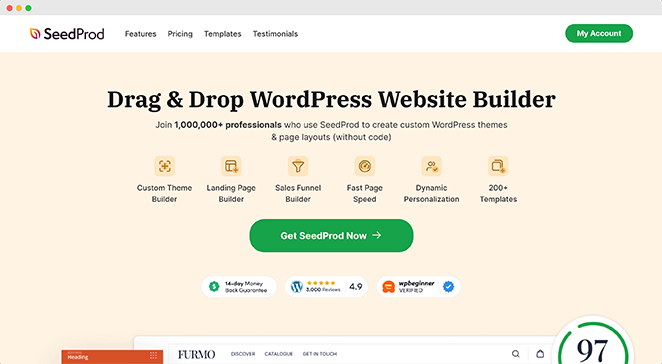
First, you’ll need to get SeedProd up and running on your WordPress site.
- Download SeedProd: Visit the SeedProd website and select the plan that best suits your needs. (There’s a free version available, too, but for the most powerful features, we recommend SeedProd Pro.)
- Install the Plugin: Once you’ve downloaded SeedProd, go to your WordPress dashboard, navigate to Plugins » Add New, and upload the plugin file.
- Activate SeedProd: After installation, click the “Activate” button.
- Start Building: You’ll see a new “SeedProd” menu in your WordPress dashboard. Click it, then click the “Set up a Maintenance Mode Page” button. Now you’re ready to create a maintenance page that wows your visitors.
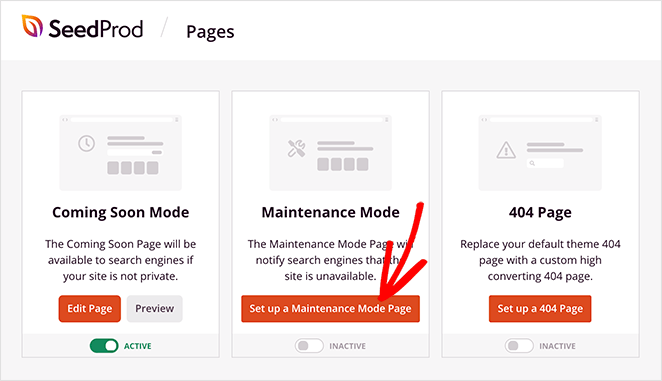
Step 2. Create a Custom Maintenance Mode Page
A successful WooCommerce maintenance mode page does more than just say, “We’ll be back soon.” It’s an opportunity to engage your visitors, build excitement, and even capture leads. And with SeedProd’s easy-to-use tools, you can create a stunning maintenance page in minutes.
Choose a Maintenance Mode Template (Or Start from Scratch)
SeedProd offers a wide range of professionally designed maintenance mode templates, so you don’t have to start from scratch. Find a template that aligns with your brand, then customize it to your liking.
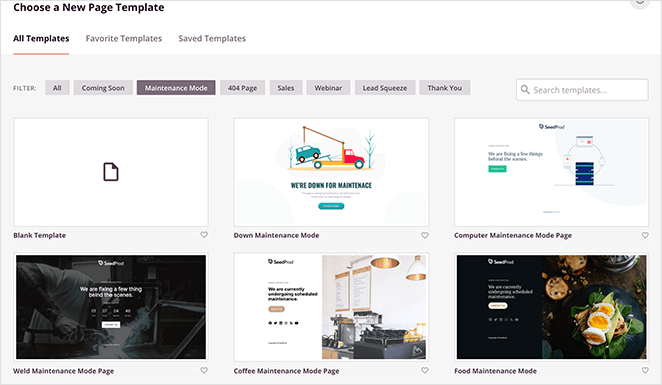
Alternatively, you can choose a blank template to start from scratch.
Hover over any maintenance template you like and click on the checkmark icon to use it.
Customize Your Maintenance Mode Page
The drag-and-drop builder makes designing your page a breeze. Add text, images, videos, countdown timers, and more – all without touching a single line of code.
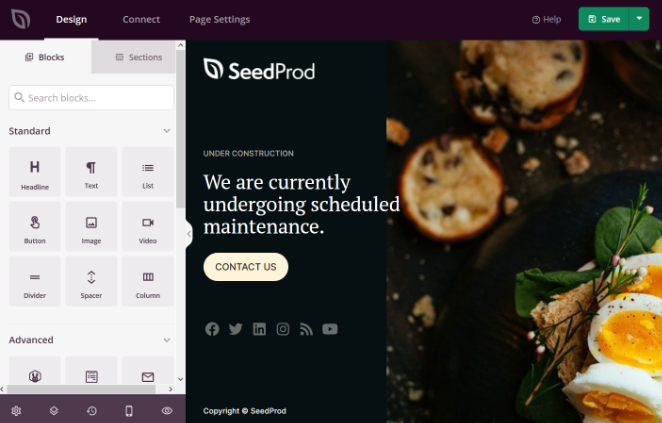
For example, I added a countdown timer to this maintenance mode page by dragging it over to the template. Then, you can click on the block to choose the style, set the date and time, and set other customization options.
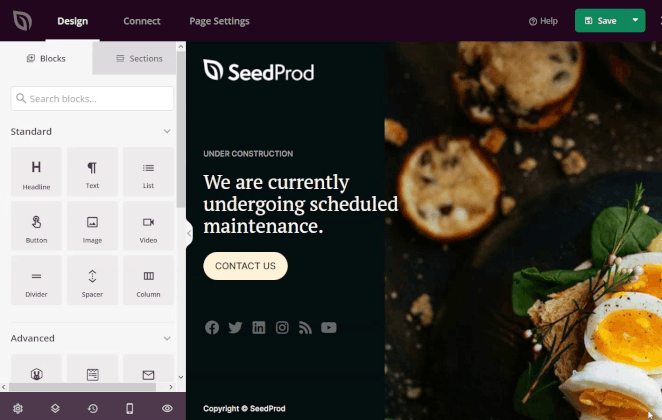
You can also click any pre-made sections, like Header, FAQ, Features, or Call to Action, to add them to your maintenance mode page. For instance, you can offer users a coupon to ensure they return when maintenance is over.
Essential Elements for Maintenance Mode in WooCommerce:
Crafting a compelling maintenance page involves using downtime to your advantage. You want to improve user experience while getting your maintenance message across.
Here’s how to make your WooCommerce maintenance page work for you:
- Showcase Your Brand: Incorporate your logo, colors, and fonts to maintain brand consistency and reassure visitors they’re in the right place.
- Communicate Clearly: Explain the reason for maintenance in simple terms. Be transparent about the estimated downtime, apologize for any inconvenience, and assure customers their data and orders are safe.
- Add Engaging Visuals: Use high-quality images and graphics that reflect your brand and add visual interest.
- Build Anticipation with a Countdown Timer: A countdown timer creates excitement and helps manage expectations.
- Capture Leads with an Email Opt-In: Offer visitors a chance to stay updated on your progress and get notified the moment you’re back online. This is a golden opportunity to grow your email list.
- Connect on Social Media: Encourage visitors to follow you on social media for updates and behind-the-scenes peeks.
- Consider a Progress Bar: For longer maintenance periods, a progress bar can visually show visitors how far along you are.
Pro Tip: SeedProd’s easy-to-use blocks and sections let you add all of these elements and more. Experiment with different layouts and content to create a conversion-friendly maintenance page. You can even suggest WooCommerce products with the special WooCommerce blocks.
Once you’re happy with your masterpiece, hit that “Save” button at the top right of the SeedProd builder.
Step 3. Enable Maintenance Mode for WooCommerce
Now that your maintenance page looks sharp, let’s protect your WooCommerce storefront while you work your magic.
Enabling maintenance mode is quite straightforward:
- Control Access: From the SeedProd builder, go to Page Settings » Access Controls. This is where you’ll tell SeedProd exactly which pages to put behind your maintenance mode screen.
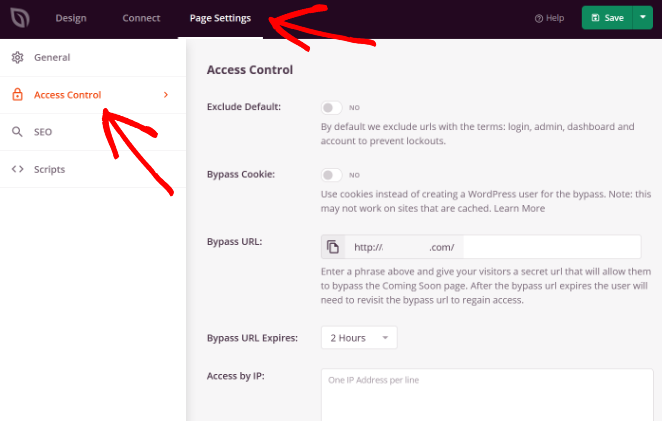
- Include WooCommerce URLs: Select the “Include URLs” option. Now, you can paste in the web addresses of the pages you want to hide during maintenance.
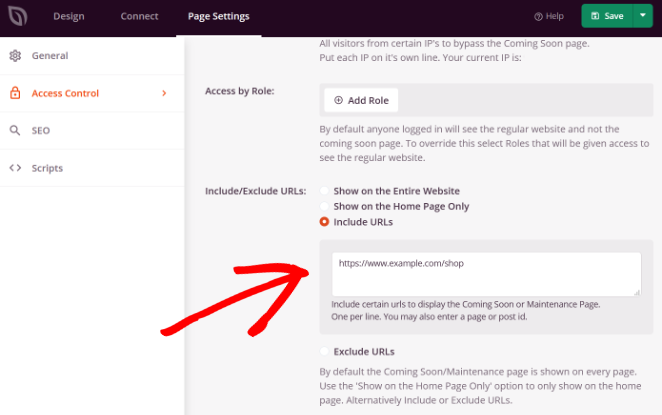
- Add Essential Pages: If you’re using a new WooCommerce installation, make sure to include these default pages (replacing “example.com” with your domain, of course):
- https://example.com/shop
- https://example.com/cart
- https://example.com/checkout
- https://example.com/my-account
- Protect Product Pages: If your store already has products, use these URL patterns to cover all your bases:
- https://example.com/product/*
- https://example.com/product-category/*
- https://example.com/product-tag/*
(Don’t worry, the asterisk (*) is just a wildcard. It ensures that any URL starting with those patterns gets included.)
Now, when activating maintenance, SeedProd will automatically hide these WooCommerce pages, preventing any accidental access while you’re making updates.
Step 4. Publish Your Maintenance Page & Activate Maintenance Mode
It’s time to make it official. With your WooCommerce pages protected and your stunning maintenance page ready to go, here’s how to put your store into maintenance mode:
- Publish: Click the dropdown arrow next to the “Save” button in the SeedProd builder and select “Publish.”
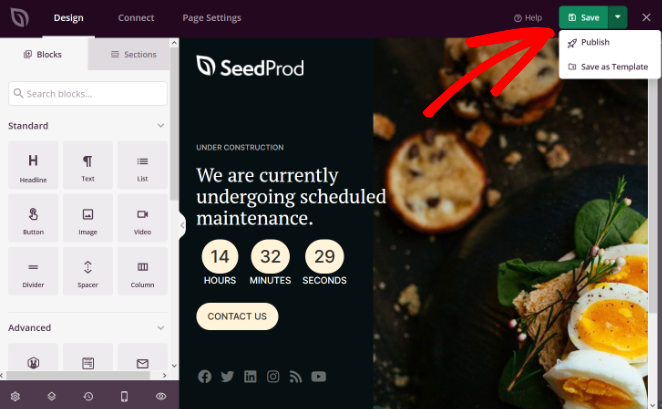
- Preview: SeedProd will let you know your page is live. Click the “See Live Page” button to double-check everything looks perfect.
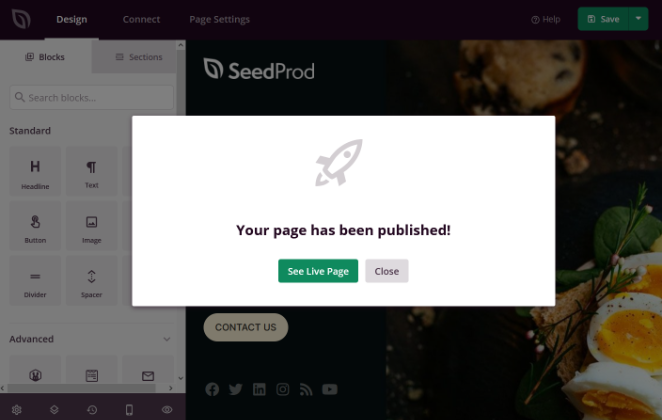
- Activate Maintenance Mode: Head back to your WordPress dashboard and go to SeedProd » Pages. Under the “Maintenance Mode” section, click the toggle to switch it from “Inactive” to “Active.” This will enable WordPress maintenance mode for your store.
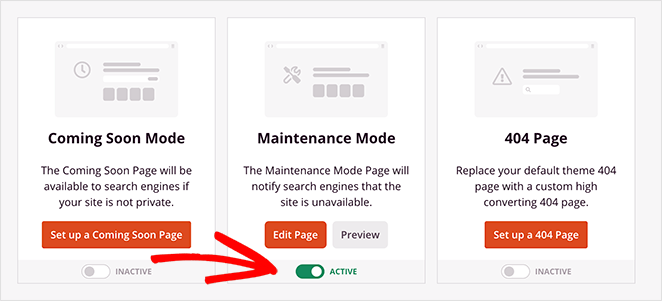
And that’s it! Your WooCommerce store is now in maintenance mode. Your custom page will greet visitors, assuring them you’ll be back soon, and you’re free to make updates without worry.
Here’s an example of how my WooCommerce maintenance mode page looks live on the front end of my test website:
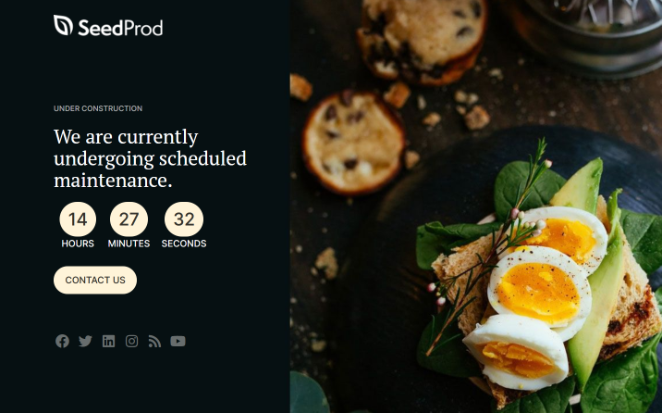
Of course, your maintenance mode page will likely look different from this, thanks to all of SeedProd’s customization options. But this is what your visitors will see when they land on your WooCommerce shop page.
Turning Maintenance Mode Off
Once you’re finished with your updates, you can take your site out of maintenance easily. Simply go back to SeedProd » Pages and toggle the “Maintenance Mode” switch back to “Inactive.”
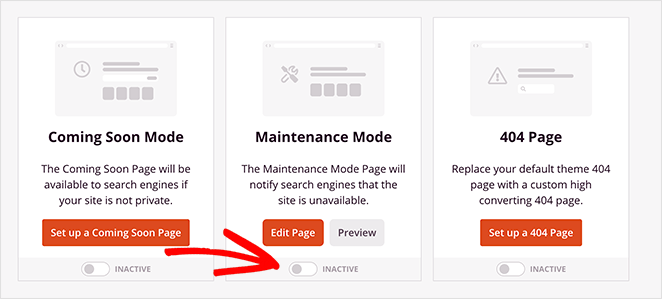
That’s all it takes to reopen your WooCommerce store to the world!
Bonus Tip: Build Hype with a WooCommerce Waitlist
Launching something new and exciting in your WooCommerce store? Don’t just hide behind a maintenance page — build anticipation with a dedicated waitlist.

SeedProd makes it easy:
- Create a Buzz-Worthy Page: Design a waitlist landing page using SeedProd’s drag-and-drop builder.
- Capture Leads: Add a signup form so eager customers can join your waitlist and be the first to know when you’re live.
- Fuel Your Email Marketing: Use your waitlist to send targeted email newsletters about your launch, promotions, and more.
- Amplify Your Reach: Include social sharing buttons on your waitlist page to encourage word-of-mouth marketing.
Turning downtime into an opportunity to connect with your audience — that’s the power of a well-crafted waitlist.
Frequently Asked Questions (FAQ)
Create a Maintenance Mode Experience That Wows
Now you know how to keep your WooCommerce store running smoothly during updates. But don’t stop there!
Get started with SeedProd today and create a stylish and strategic maintenance mode page. Your customers (and your peace of mind) will thank you.
Want more tips and tricks to boost your WooCommerce success? See these in-depth guides:
- Best WooCommerce Affiliate Plugins to Maximize Your Sales
- Best WooCommerce Plugins To Skyrocket Your Sales
- How to Customize Your WooCommerce Checkout Page
- Best WooCommerce SEO Plugins for Better Rankings
- How to Make a Custom WooCommerce Thank You Page
- How to Speed Up Your WooCommerce Store (10 Easy Ways)
Thanks for reading! We’d love to hear your thoughts, so please feel free to leave a comment with any questions and feedback.
You can also follow us on YouTube, X (formerly Twitter), and Facebook for more helpful content to grow your business.

